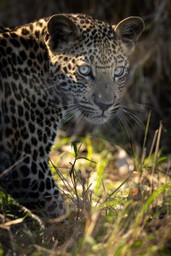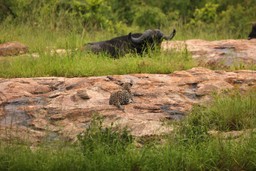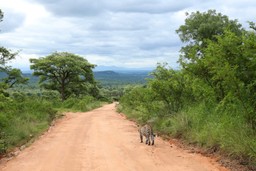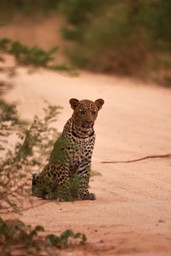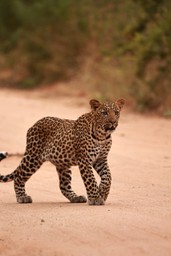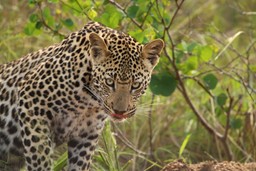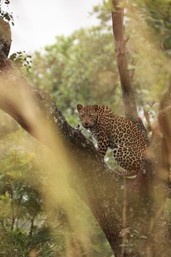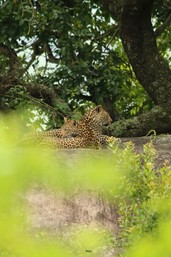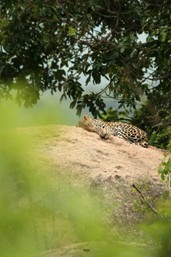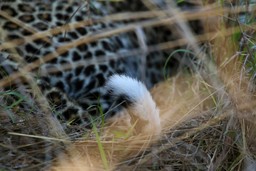We spotted them first on an early morning game drive back in October last year, when our close friend and photographer extraordinaire, Marlon du Toit came to visit. We have been following this female leopard since. It’s been an incredible journey witnessing how the mother and her two youngsters have made their home around our lodge.
On the first morning of Marlon’s visit, just a short distance from our main gate, we spotted two leopard cubs next to the road, tucked away in the lush green bush of the summer months in Kruger. At the time the cubs were about 3-4 months old, extremely shy and reserved. Their mother had gone to hunt, leaving the cubs alone, somewhat fearful, and very curious.
We spent some time watching them, hoping the mother would return. We then continued out on our drive, hoping to see them later in the day. One of our guests waited patiently and was there when the mother returned. We went back later on our sunset game drive to look for the new family, but they were too deep into the dense bush. Since then this family of three have become part of our almost daily sightings. The cubs have grown a lot now, and they are starting to hunt on their own.
Leopards are solitary creatures that only spend time with others when they are mating or raising young. They are also nocturnal and spend their nights hunting instead of sleeping. Leopards depend on their mother for food, and don’t leave the den until they are about 3 months old.
At around the age of 12 months cubs start to reach independence and are able to hunt on their own, and reproduce. This young male and female near our lodge were about 11 months old when mom chased them away to start their own lives. The quicker she can teach her cubs to be independent, the better.
Our guests, guides and team have been spoiled in seeing this mother leopard and her cubs through the stages of parenting and growing up. What a beautiful story, as we celebrate this Mother’s Day, knowing that even the animal kingdom showcases the outstanding nature and importance of motherhood, mother figures and their nurturing qualities – trying their best to equip their cubs to go into the world with courage, pride and fearlessness.
The significance goes even deeper as the leopard is a symbol of nobility, honour and courage. The leopard is considered sacred by the Mdluli Royal Family, and its representation is woven into various elements of Siswati culture – and is the central focus of our logo.
We are still lucky enough to see the mother on most days as she is still active around the lodge. We have named her “make”, Siswati for mother, as we consider her the mother of our Mdluli Reserve, not only taking care of her cubs, but in delighting our guests when making her appearance.
Here’s to all the moms and mother figures out there. You bind families together, you nurture, you encourage, comfort and believe in us when we go out into the world on our own.
The love of a mother and mother figure is one of life’s greatest blessings.
Happy Mother’s Day.
Did you know?
– Leopards’ ears can hear five times more sounds than the human ear.
– The leopard’s spots are called rosettes because they resemble roses.
Source: LiveScience



